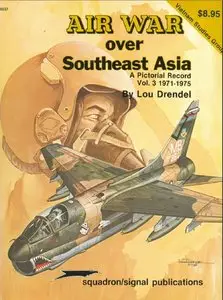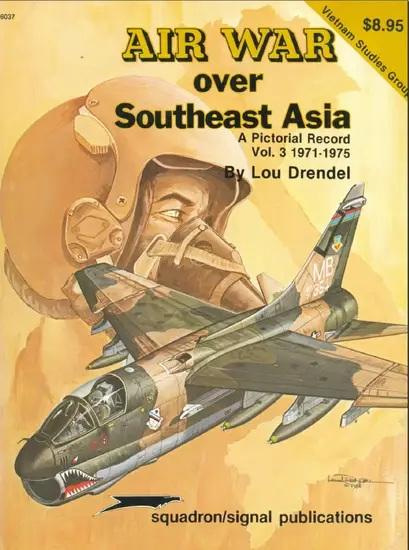Air War Over South-east Asia (3): 1971-1975 (Vietnam Studies Group 6037) By Lou Drendel
Publisher: Squadron/Signal Publications 1984 | 81 Pages | ISBN: 0897471482 | PDF | 27 MB
Publisher: Squadron/Signal Publications 1984 | 81 Pages | ISBN: 0897471482 | PDF | 27 MB
As the American troop commitment in Vietnam wound down, North Vietnamese reliance on conventional warfare to conquer South Vietnam increased. The Viet Cong had ceased to be an effective political or military force with the stunning communist defeat suffered during the Tet Offensive of 1968. There was no longer any possibility of an indigenous guerilla force overthrowing the government of South Vietnam, simply because that force had ceased to exist in the carnage of the Tet Offensive. Any communist victory in the south would have to be achieved by the North Vietnamese regular Army, and the North proved exceptionally singleminded in this regard. Contrary to what might have reasonably been expected, the avowed and demonstrated pull-out of American forces, coupled with undisguised North Vietnamese aggression, did not result in any dimunition of the antiwar movement in the United States. The radical chic of the late sixties and early seventies demanded that any liberal who admitted to being liberal also must voice his unequivocal opposition to the American Government's policy in Vietnam. The antiwar movement had become unreasoning, intransigent, and blind to what was actually happening in Vietnam. Fortunately, Richard Nixon was not the sort of President who would allow his decisions to be swayed by this radical chic. The North Vietnamese were marshalling their forces for an all-out spring offensive in 1971, after operations in Cambodia during the spring of 1970 had destroyed communist supply lines through that country into South Vietnam, aborting any communist offensive in 1970. Prior to the joint US-ARVN invasion of Cambodia, it was estimated that up to eighty-five percent of ail communist was materiel funneled through Cambodia, particularly through the port of Sihanoukville. When that supply line was closed, the communists were forced to rely upon the Ho Chi Minh Trail through Laos. By January of 1971, the Trail was nearly as busy as the LA Freeway at rush hour, and the North was obviously poised for a major invasion of the South. In order to secure their remaining invasion route, the North Vietnamese moved three divisions of troops into the Laotian panhandle, and emplaced dozens of SAMs and hundreds of AAA gunsitcs along the Trail.



